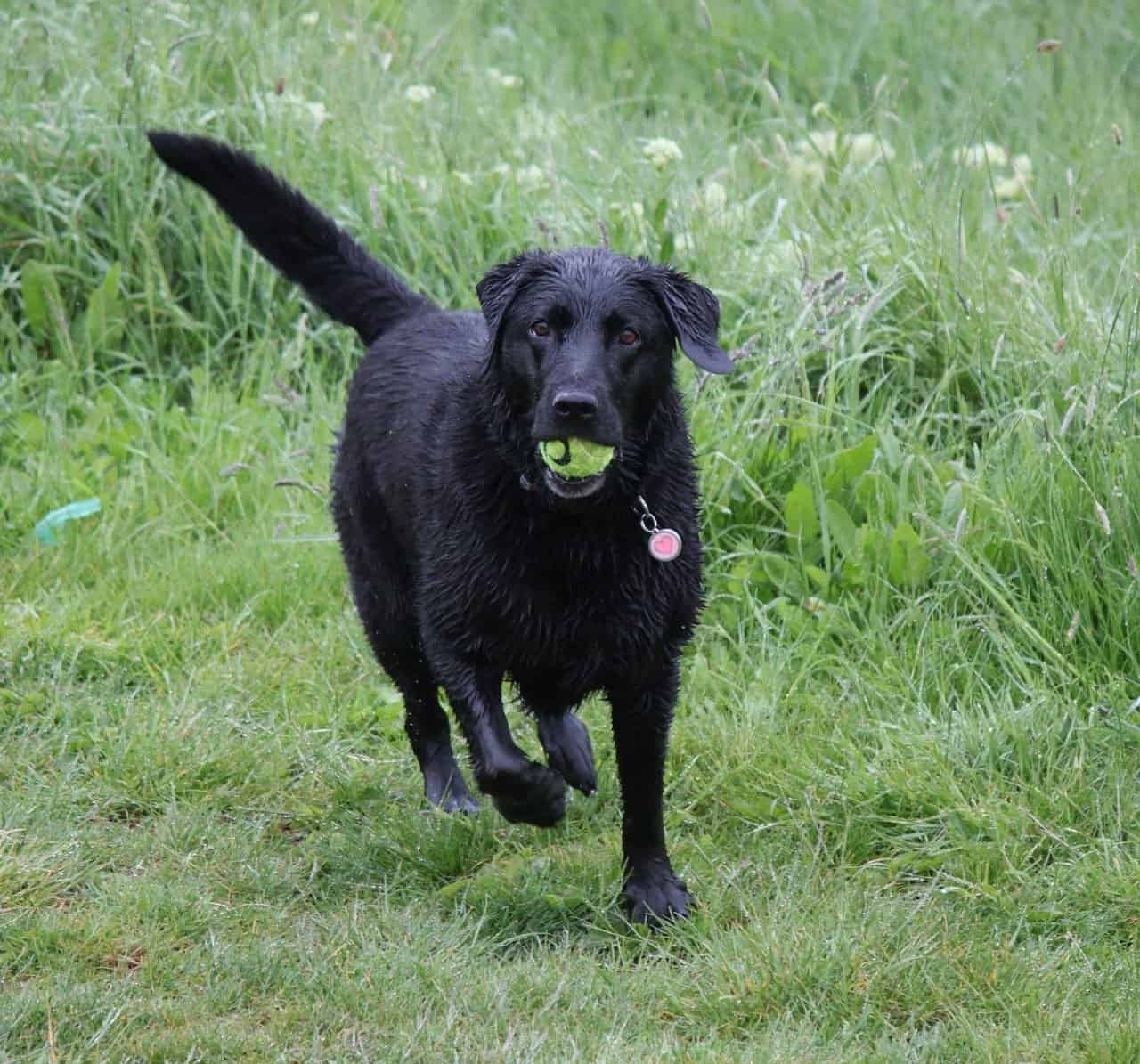The reasons behind a dog chasing its tail and crying boil down to:
- Stress-related issues
- Parasites
- Untreated injury
- Excess energy
Dog Chasing Its Tail and Crying: Causes and Solutions
Seeing your dog chase its tail from time to time is perfectly normal. It’s just something our furry friends do out of boredom, and sometimes curiosity.
However, if the situation is so bad that you have to Google the reasons behind a dog chasing its tail and crying, then you may be dealing with a more severe issue.
Dogs can’t tell us when they have a problem, so they resort to behaving strangely to get our attention.
Now the question is — what is bothering your dog?
Understanding Your Pup
As I mentioned, if your pup likes to chase its tail, and you don’t notice any odd behavior afterward, there’s no need to worry.
Your dog is merely trying to entertain itself. Keep in mind that puppies also like exploring anything and everything, so tail-chasing is a pretty obvious choice.
However, if your dog tends to whine a lot while chasing its tail, that’s a clear sign that something is wrong with your pup.
Compulsive and destructive behavior in dogs always has a root cause. In this case, these are the most common ones:
- Stress
- Parasites
- Injuries
- Excess energy
Stress-Related Issues
Dogs can get stressed when put into a situation that makes them uncomfortable. Most commonly, they tend to act out when you place them in unfamiliar surroundings.
If you’ve just recently moved, and your pup starts acting differently, it’s probably stressed and trying to cope with the situation the only way it knows how.
In this case, obsessive tail-chasing is a coping mechanism.
Unfortunately, if you don’t deal with the issue on time, it could cause your pup to harm itself.
How to Deal With Dog Stress
Dealing with obsessive-compulsive behavior brought on by stress can be difficult. However, if detected on time, it can be treated.
First of all, you need to identify the trigger. If, for example, your pup is feeling stressed because of its new surroundings, you will need to help your dog feel safe and comfortable in its new home.
Find an area the dog can call it’s own. Place its favorite toys, food bowl, water bowl, and doggy bed there.
Even more importantly, try to spend extra time playing with your furry friend. You need to show your pup that it’s safe and loved.
If you feel that the problem is too severe to handle on your own, I recommend that you consult a professional.
In some cases, it may take a dog trainer to rid your pup of this unhealthy habit.
Parasites
Dogs have to deal with ticks and fleas all the time. They tend to do so by scratching and biting the infested area.
In some cases, parasites will latch onto the base of your pup’s tail, which is why it will resort to chasing it.
Once your dog manages to reach the said area, it will most likely nick its skin. That can cause it to cry out in pain.
Ultimately, if your pup does this once in a while, there’s no cause for concern.
However, if it becomes a learned behavior, your dog could end up severely hurting itself.
How to Deal With Dog Parasites
Parasite infestations are pretty easy to notice, even if you might not be able to see the actual flea or tick on your pet.
If you observe your dog frantically biting at its fur, it’s time for a trip to the vet.
The best way to deal with the problem is to treat it as soon as possible — before it becomes more severe.
Injury
If your dog has injured itself near the base of its tail at some point, it’s most likely trying to bite that area, hence the tail-chasing.
Ultimately, if it does reach the injured spot, the dog will probably cry out in pain.
Worst of all, even after the injury heals, your dog may continue to chase its tail when it’s stressed because it has developed a habitual response to other threats.
How to Deal With Dog Injuries
If your dog sustains an injury on its rear, this may cause it to pay attention to that area more.
Most dogs will try to lick the injured area, but since it’s hard to reach, it may look as if your dog is chasing its tail.
Unfortunately, the only thing you can do is take your pooch to the vet for an X-ray and to get a proper diagnosis.
If caught on time, your dog will fully recover from the injury and won’t develop an obsessive-compulsive tail-chasing habit.
Excess Energy
One of the most common reasons for tail-chasing is excess energy. If you keep your dog indoors at all times and only take it out for walks, your pup is probably craving mental stimulation.
I know that, in some cases, it’s impossible to let your dog roam freely during the day (especially if you live in an apartment).
However, to treat your dog’s compulsive tail-chasing and crying, you will need to find a way to entertain your pooch.
How to Deal With Dog Excess Energy
In my experience, the best solution to this problem is to take your pup out twice a day. I recommend doing so once in the morning and again before bedtime.
That way, you’ll tire out your pooch after it has gotten a good night’s sleep and also wear it out enough to want to rest at night.
Additionally, consider buying some fun toys for your dog to play with when you’re not around.
By providing your furry friend with the mental stimulation it needs, you should be able to prevent the progression of obsessive-compulsive tail-chasing.
Final Thoughts
Since your search for the reasons behind a dog chasing its tail and crying has led you here, I hope my suggestions will help you deal with your pup’s behavior.
We love our furry friends and would do anything to make them happy. So, when we see that something is causing them to behave strangely, it’s reasonable to be scared.
The main takeaway is that you can prevent obsessive tail-chasing by paying close attention to your pup.
Try to figure out what could be causing the erratic behavior.
Check for injuries, fleas, and ticks. If there is nothing physically wrong with your dog, the problem could be stress-related.
In some cases, the best solution is to seek professional help.
Worry not, though — your vet will be able to examine your dog and prescribe an effective treatment.


